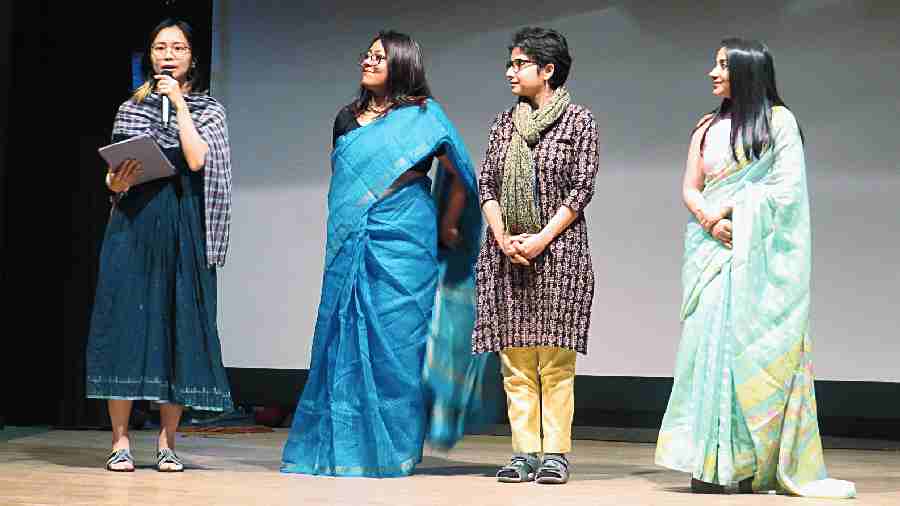“My film is like a love letter to Tagore and Kolkata,” Sasaki Mika smiles. The 29-year-old filmmaker is waiting for the screening of her documentary film Tagore Songs at Rabindra Okakura Bhavan when this conversation starts and continues afterwards.
The film shows how the Bard, especially his music, informs life on both sides of the Bengal border for people from different strata — a music teacher, a young student, a youth from a rock group... — in Kolkata and in Dhaka.
Sasaki has been exposed to both sides of Bengal, having spent time in a Dhaka homestay when she was 23. By then, she was already studying Bengali and could read Bengali as well. “Japan ey Bangali kom. Dhaka giye prothom Banga bhashay onek katha bollam (There are few Bengalis in Japan. On reaching Dhaka, for the first time I could speak a lot in Bengali), she says.
Sasaki points out that in text books and in Bengali classrooms, the formal address apni is more prevalent. “But I love it how Bengalis switch to tumi as soon as friendship develops.”
Sasaki wanted to visit India all by herself and decided to pick up a local language first. At first, she had chosen Hindi as her language of study at the Tokyo University of Foreign Studies but soon realised that “Bangla bhashay katha bole onek moja (It is fun to talk in Bengali)”.

Sasaki Mika with some of her cast members at the Salt Lake screening. Sudeshna Banerjee
She came in contact with two Bengali-speaking Japanese teachers during her time at the university. There were three of them, Kyoko Niwa, who had studied comparative literature at Jadavpur University, Yuka Okuda who had been at Sangeet Bhavana, Visva-Bharati, and Kazuhiro Watanabe who used to head the Bengali section of “NHK-World Japan (the international service of the Japanese public broadcaster). “Onara khub bikhyato manush (They are well-known people),” she says.
Once she switched, though her introduction was through a grammar course, she was also reciting Sukumar Roy’s Ramgorurer Chhana on the side. “My interest grew mainly through my exposure to Bengali culture,” Sasaki says, listing her four high points — Tagore, Ray, cha and adda. “I have watched many films of Satyajit Ray on DVD and loved the flavour of Bengali culture in them. I wanted to get that as I grew as a filmmaker.”
The film was shot before the pandemic, in 2017. During her trip to Bengal, she realised how Tagore supports people with his strong and beautiful messages. “If no one answers your call, walk alone — this message encouraged me a lot. And in Bengal, so many people seem to be living by this song.”
Screening the film in Tagore’s own land was a huge opportunity for her. Receiving compliments from audience members after the show, mostly in Bengali, Sasaki looked content. “Calcutta has changed somewhat since I last came, so many new buildings and new Metro stations. But hearts of people never change.”
The 29-year-old filmmaker has got a scholarship to study at the direction and screenplay writing department at the Satyajit Ray Film and Television Institute and will be returning to the city for three years in December. “My fiance may also visit me later. Amra ek songe onek kichhu khabo Bangla khabar - machh, khichuri…” she signs off, laughing.
Sudeshna Banerjee
What is your message for Sasaki Mika? Write to The Telegraph Salt Lake, 6 Prafulla Sarkar Street, Calcutta 700001 or email to saltlake@abp.in
